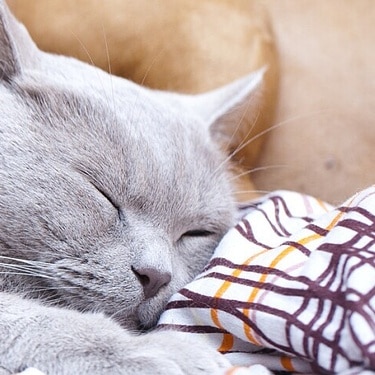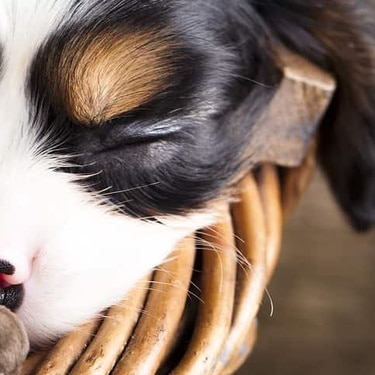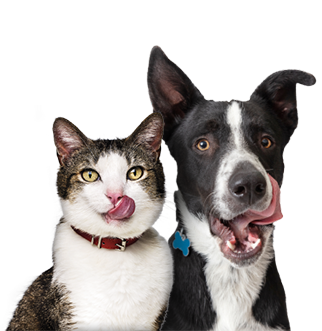
-
Find the right food for your petTake this quiz to see which food may be the best for your furry friend.Find the right food for your petTake this quiz to see which food may be the best for your furry friend.Health CategoryFeatured products
 Adult Light Large Breed Chicken Meal & Barley Recipe Dog Food
Adult Light Large Breed Chicken Meal & Barley Recipe Dog FoodFewer calories for less active large breed dogs
Shop Now Hill's Science Diet Adult Healthy Mobility Large Breed Chicken Meal, Barley & Brown Rice Recipe Dog Food
Hill's Science Diet Adult Healthy Mobility Large Breed Chicken Meal, Barley & Brown Rice Recipe Dog FoodAdvanced nutrition shown to support joint health and improve mobility
Shop Now Adult Large Breed Chicken & Barley Recipe Dog Food
Adult Large Breed Chicken & Barley Recipe Dog FoodSupports healthy joints, lean muscle, and beautiful coat for large breed dogs
Shop NowFeatured products Adult Oral Care Chicken & Brown Rice Recipe Cat Food
Adult Oral Care Chicken & Brown Rice Recipe Cat FoodClinically proven kibble technology to reduce plaque & tartar build-up
Shop Now Adult Sensitive Stomach & Skin Pouch Variety 12 Pack Cat Food, Chicken & Beef, Salmon & Tuna
Adult Sensitive Stomach & Skin Pouch Variety 12 Pack Cat Food, Chicken & Beef, Salmon & TunaCarefully made, gourmet daily nutrition. Tasty chunks with Salmon & Tuna in a decadent gravy. Supports digestive health, nourishes skin and promotes a lustrous fur.
Shop Now Adult Perfect Digestion Chicken, Barley & Whole Oats Recipe Cat Food
Adult Perfect Digestion Chicken, Barley & Whole Oats Recipe Cat FoodHill's Science Diet's breakthrough nutrition supports ultimate digestive well-being & healthy microbiome
Shop Now -
DogCat
- Cat Tips & Articles
-
Health Category
- Weight
- Skin & Food Sensitivities
- Urinary
- Digestive
- Kidney
- Dental
- Serious Illness
-
Life Stage
- Kitten Nutrition
- Adult Nutrition
Featured articles Adopting a Pet: What You Need to Know
Adopting a Pet: What You Need to KnowLearn the basics of adopting a pet, including where to begin and common questions you should ask yourself when deciding which kind of pet is best for you.
Read More Fun Ideas for Kids and Pets This Summer
Fun Ideas for Kids and Pets This SummerOutdoor summer activities with your dog or cat can be fun for kids, too. Learn how they also teach kids responsibility & creates a bond with their pet.
Read More Cat vs. Dog: Which Is the Best Pet for Me?
Cat vs. Dog: Which Is the Best Pet for Me?Learn about important differences between dogs and cats, such as cost & space considerations. These factors can help you decide which pet is best for you.
Read More -


After self-isolating for several weeks or months, going back to work or school can be difficult for both you and your pet. Your furry friend has probably been enjoying extra snuggles, playtime and maybe even extra snack time!
Knowing how to stop pet separation anxiety can help make this transition easier, especially if you've been quarantining or working from home for an extended period of time. Even the most independent cat or dog will experience some stress while you're gone; they might just hide it well. Here are five tips for how to leave your dog home alone and help your cat cope after you've returned to work or school.
1. Establish a New Schedule
Once you know when you'll go back to work and start up your old routine, it's helpful to establish a new pet routine before you start going out regularly. This type of modification helps to stop pet separation anxiety by giving you both time to adjust to the new schedule. You'll have to relearn how to leave the house for long periods of time, too!
To get started, try a few "fake" exits and entrances. Start your final "goodbye" routine: Put on your jacket, grab your coffee and keys and open the door. Say goodbye to your pet, step out into the hall for a minute or put your backpack in the car, and then go back inside. Brief exits and entrances like this show your pet that when you walk out the door, it doesn't mean you'll always be gone for long stretches of time.
MSPCA-Angell recommends a "variable schedule" by leaving for, say, one minute the first time, then 12 minutes and then three minutes so that your pet can't predict how long you'll be gone. This will help to lessen the anxiety your dog or cat feels when you are out of the house for those long workdays.
2. Hold Back the Emotions
As a pet parent, this is probably the hardest behavior change. How can you not make a big fuss over each other every time you come and go? But getting your dog or cat riled up with love before you leave the house, say the experts at Colorado State University's James L. Voss Veterinary Teaching Hospital, can actually contribute to their separation anxiety.
 It may sound counter-intuitive to act mellow when you see your fur baby after spending hours apart, but approaching them with a sense of calm keeps their emotions from getting too extreme. This creates a smoother segue way from their quiet hours alone to the sheer happiness at being reunited with their favorite person.
It may sound counter-intuitive to act mellow when you see your fur baby after spending hours apart, but approaching them with a sense of calm keeps their emotions from getting too extreme. This creates a smoother segue way from their quiet hours alone to the sheer happiness at being reunited with their favorite person.
Don't worry: After about 20 or 30 minutes, you can play with your pet for as long as you want.


Tasty Tips
Young pets may need several visits in their first year for vaccinations. Adult pets generally benefit from annual check-ups, while senior or special-needs pets might require more frequent visits.
3. Create a New Feeding Schedule
An essential step in learning how to stop pet separation anxiety is to adjust the mealtime routine. When you're home often, it's easy to get into a pet food groove of more frequent feedings and additional snacks. But what happens when you're out and about again?
Because dogs and cats are creatures of habit and abrupt changes in mealtime can compound stress, try to ease back into a structured feeding pattern. Generally speaking, dogs mealtimes are twice a day — once in the morning and once in the evening. A cat's meal routine depends on how they're fed: Cats with self-feeders won't require much if any change, but cats on a feeding schedule will. As with any changes to a pet's diet, a slow transition is best. Speak with your veterinarian about ways to modify your pet's mealtimes with the least amount of stress.
Before going back to work or school, take inventory of what you have on hand and stock up on what you'll need. This will prevent any last-minute "we're out of food!" moments, which can add to your own stress.
4. Create a Comfort Zone
While you're away from home, your pets will seek out spots where they feel safe and secure. Been on the couch a lot lately? One great tip for how to leave your dog home alone and how to stop pet separation anxiety is to keep that comfy spot in place while you're gone. "A soft bed in a dark room is always calming," recommend the vets at DogHealth.com. If your pup is crate-trained, you can set up a "doggy den" in the crate, leaving the door open, using pillows and blankets. If your dog is anxious, they'll find solace in this space.
Cats love to hide in small, dark spaces whether or not their pet parents are home. They love boxes, too: Add a blanket or towel and it's a cat bed. Closets make another secure fortress for cats, and big, fluffy sweaters make great cat bedding.
 Another pro tip: In addition to pillows and blankets, include a piece of clothing that smells like you (pajamas are a great option) so that your furry friend feels like they're snuggling you.
Another pro tip: In addition to pillows and blankets, include a piece of clothing that smells like you (pajamas are a great option) so that your furry friend feels like they're snuggling you.
5. Provide Enrichment
One of the ways in which pets release their anxiety is through destructive behavior. Boredom while home alone is a key factor for this conduct in dogs, say animal behavior researchers in the United Kingdom, not only because they miss their humans but also because they're frustrated. This frustration leads them to dig up or chew on anything available. Many cats are like this, too, and they might even act out their frustration on their human's couch fabric or a roll of toilet paper.
The best way to keep boredom at bay is with enrichment activities that engage your pet while you're gone. Playing music and pet-centric television shows can be comforting to animals, reducing their sense of loneliness. The RSPCA Victoria suggests easy-to-make dog enrichment toys like a muffin tin filled with toys and treats that they "nose" out of the individual compartments. You could also fill a shallow container (a small pool or storage bin) to create a ball pit! You can keep your cat busy with food puzzles for their curiosity, catnip toys for prey or even apps for their hunting instinct (they love chasing around electronic fish).
Pet parents and pets will require time and patience during this adjustment period. But by using best practices regarding how to stop pet separation anxiety, staying tuned in to your furry friend's needs and showing them lots of love, you can make the transition back into a "normal" schedule a whole lot easier.


Christine O'Brien is a writer, mom, and long-time cat parent whose two Russian Blues rule the house. Her work also appears in Care.com, What to Expect, and Fit Pregnancy, where she writes about pets, pregnancy, and family life. Find and follow her on Instagram and Twitter @brovelliobrien.
Related products

Fewer calories for less active dogs

Fewer calories for less active large breed dogs

Advanced nutrition shown to support joint health and improve mobility

Supports healthy joints, lean muscle, and beautiful coat for large breed dogs
Related articles

Learn about important differences between dogs and cats, such as cost & space considerations. These factors can help you decide which pet is best for you.

Open admission animal shelters help end animal abandonment, homelessness, and unnecessary euthanasia. Learn more about the shelters and how you can help.

Outdoor summer activities with your dog or cat can be fun for kids, too. Learn how they also teach kids responsibility & creates a bond with their pet.

Learn the basics of adopting a pet, including where to begin and common questions you should ask yourself when deciding which kind of pet is best for you.

Put your pet on a diet without them knowing
Our low calorie formula helps you control your pet's weight. It's packed with high-quality protein for building lean muscles, and made with purposeful ingredients for a flavourful, nutritious meal. Clinically proven antioxidants, Vitamin C+E, help promote a healthy immune system.
Put your pet on a diet without them knowing
Our low calorie formula helps you control your pet's weight. It's packed with high-quality protein for building lean muscles, and made with purposeful ingredients for a flavourful, nutritious meal. Clinically proven antioxidants, Vitamin C+E, help promote a healthy immune system.

